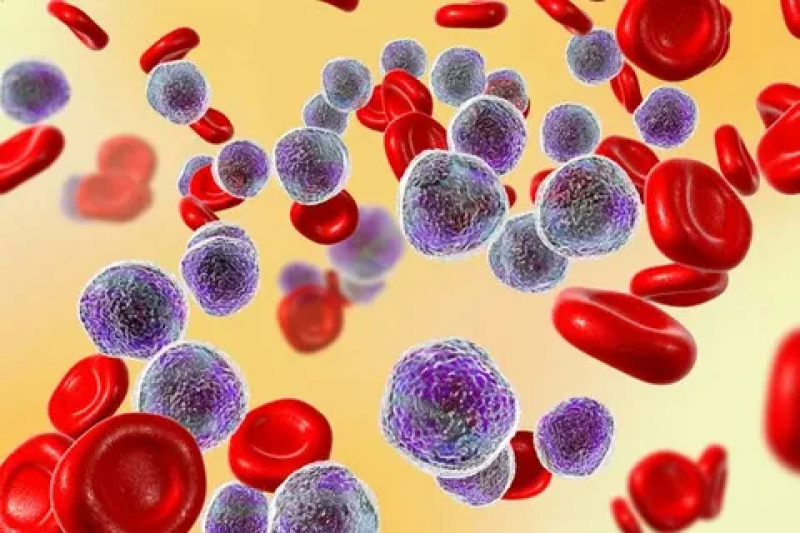Acute Lymphoblastic Leukemia (ALL) is an aggressive hematologic malignancy characterized by the uncontrolled proliferation of lymphoid progenitor cells in the bone marrow, blood, and other organs. This disease primarily affects children but also presents significant challenges in adult populations. Over the past decade, the therapeutic landscape for ALL has undergone transformative changes, driven by advances in molecular biology, targeted therapies, and immunotherapy approaches.
Understanding the Current Management of Acute Lymphoblastic Leukemia
The backbone of Acute Lymphoblastic Leukemia Treatment has traditionally involved intensive chemotherapy regimens aimed at achieving complete remission. Induction therapy typically comprises multi-agent chemotherapy protocols including corticosteroids, vincristine, anthracyclines, and asparaginase, intended to eradicate leukemic blasts from the marrow. Following remission, consolidation and maintenance therapy phases seek to eliminate residual disease and prevent relapse.
In pediatric ALL, these regimens have yielded substantial survival benefits, with cure rates approaching 85%. Adult ALL cases, however, remain more challenging due to heterogeneous disease biology and greater treatment-related toxicity. These disparities have fueled the pursuit of novel therapies tailored to high-risk patient subsets and relapsed/refractory disease scenarios. This comprehensive understanding of chemotherapy’s role remains vital for contextualizing advances that enhance therapeutic efficacy and safety.
Targeted Therapies Revolutionizing Acute Lymphoblastic Leukemia Treatment
Targeted therapies have emerged as cornerstone interventions in ALL management, especially in genetically defined subtypes. Tyrosine kinase inhibitors (TKIs) targeting the BCR-ABL fusion protein revolutionized treatment for Philadelphia chromosome-positive (Ph+) ALL, transforming a once dismal prognosis into a manageable chronic condition. Agents such as imatinib, dasatinib, and ponatinib have demonstrated remarkable improvements in survival when combined with chemotherapy.
Beyond Ph+ ALL, novel small molecules inhibiting critical signaling pathways and epigenetic regulators are under clinical evaluation. For instance, monoclonal antibodies linked to cytotoxic agents, such as inotuzumab ozogamicin targeting CD22, have expedited disease remission in relapsed/refractory ALL patients. Likewise, blinatumomab, a bispecific T-cell engager (BiTE) directed against CD19-positive leukemic cells, harnesses the immune system to eradicate malignant cells selectively. Such precision medicine approaches underscore a paradigm shift away from indiscriminate cytotoxic chemotherapy towards more personalized and less toxic interventions.
Immunotherapy and Cellular Therapies Driving New Hope in ALL Treatment
Immunotherapeutic strategies have rapidly gained traction as transformative options for ALL patients with limited response to standard therapies. Chimeric Antigen Receptor (CAR) T-cell therapy represents a landmark innovation, where patients’ own T cells are genetically engineered to target CD19 antigens on leukemic blasts. This approach has demonstrated unprecedented complete remission rates in relapsed or refractory B-cell ALL, offering new avenues for durable disease control.
In addition to CAR T-cell therapy, immune checkpoint inhibitors and cancer vaccines are being investigated in early-phase trials, aiming to modulate the immune microenvironment and sustain antileukemic activity. These cutting-edge modalities continue to refine the therapeutic armamentarium, providing hope for long-term remission in patient populations historically considered high-risk.
Accessing Comprehensive Market Intelligence Reports for ALL Therapeutic Trends
For professionals seeking detailed analyses of the evolving ALL therapeutics marketplace, specialized market intelligence reports provide invaluable insights. These reports elaborate on clinical trial pipelines, competitive landscapes, regulatory updates, and forecasted market dynamics shaping investment and research priorities. Stakeholders, including pharmaceutical companies, healthcare providers, and investors, can navigate development opportunities effectively through these curated overviews.
Such reports often include segmentation data by drug class, therapeutic indication, regional market specifics, and manufacturer profiles – enabling a granular understanding of the ALL treatment domain. Accessing up-to-date tactical and strategic information through these platforms is essential for informed decision-making and staying abreast of competitive innovations driving clinical and commercial success.
Future Directions and Innovative Therapeutics in Acute Lymphoblastic Leukemia
The horizon for ALL treatment is promising, with emerging modalities combining multi-targeted agents, novel immunotherapies, and personalized medicine frameworks. Advances in genomic profiling enable risk stratification and targeted intervention, while improvements in drug delivery systems enhance efficacy with minimized toxicity. Pipeline candidates focus on overcoming treatment resistance and improving quality of life during and post-therapy.
Ongoing research prioritizes durable responses and reducing relapse rates, incorporating combination therapies that synergize chemotherapy, targeted agents, and immune modulation. Investigational therapies such as bispecific antibodies beyond CD19, next-generation CAR T cells, and cellular therapies targeting myeloid antigens reflect the dynamic innovation landscape driving future standards of care.
Get This Report in Japanese Language: 急性リンパ性白血病の治療
Get This Report in Korean Language: 급성 림프구성 백혈병 치료
Read More Articles Related to this Industry- Key Developments in the Cancer Diagnostics Industry
About Author:
Ravina Pandya, Content Writer, has a strong foothold in the market research industry. She specializes in writing well-researched articles from different industries, including food and beverages, information and technology, healthcare, chemical and materials, etc. (https://www.linkedin.com/in/ravina-pandya-1a3984191)
